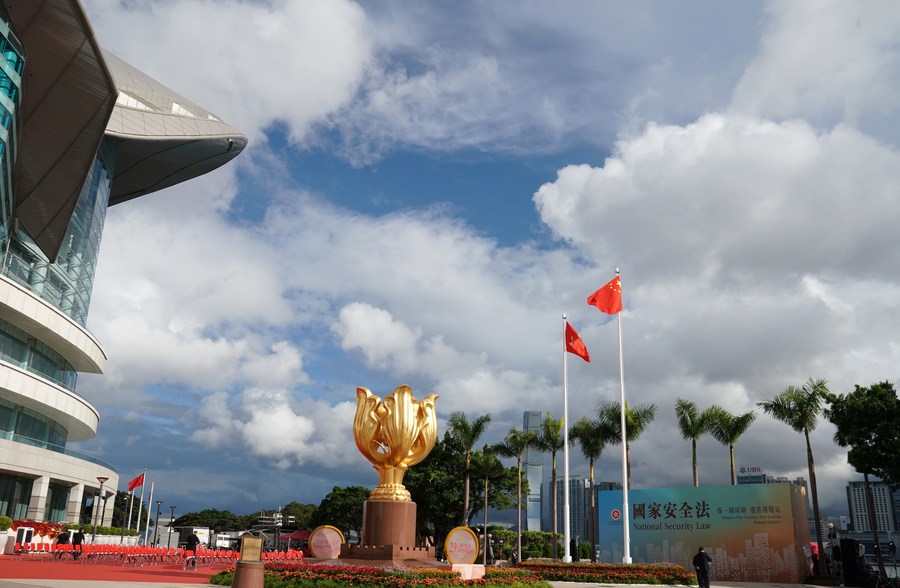 [Photo/Xinhua]
[Photo/Xinhua]
Vacation travel pushes checkpoints close to maximum capacities
Hong Kong lawmakers have urged the city to enhance crowd control management, suggesting technology could be used to improve cross-boundary travel, after its borders were strained during the Easter break, with over 4.26 million inbound and outbound travelers recorded.
They also said vacation peaks have brought checkpoints close to their maximum capacities, and only the opening of more cross-boundary facilities, including the new Huanggang port now under construction and due to open in 2026, will be able to ease the bottlenecks.
Between Friday and Monday — the city's Easter holidays — around 2.07 million inbound and 2.19 million outbound travelers passed through Hong Kong's land, sea and air border control points — 40 percent more than during the same holiday last year. Among those who left the city for vacations, over 80 percent headed for the Chinese mainland.
Over 1.1 million cross-boundary travelers were recorded on Friday alone, with nearly 800,000 holidaymakers leaving Hong Kong. The departure figure was much higher than the special administrative region government's previous estimate of 601,000, causing heavy congestion at checkpoints across the city.
More than two million people arrived in and departed from Hong Kong last weekend.
On Monday, the last day of the four-day break, over 924,000 cross-boundary travelers were logged by the city's Immigration Department.
The Northbound Travel for Hong Kong Vehicles program also drew people to travel to the mainland via the Hong Kong-Zhuhai-Macao Bridge in private vehicles. On Monday, the bridge's Zhuhai port saw over 19,000 inbound and outbound vehicles, a record high since its opening in 2018.
Hong Kong lawmaker Gary Zhang Xinyu said the pressure experienced by checkpoints during the Easter holiday, predominantly from northbound passenger flows, would likely recur during other public holidays such as National Day and the Lunar New Year.
Zhang proposed leveraging cutting-edge technologies to enhance clearance efficiency and exploring innovative approaches for upgrading the checkpoints, such as using autonomous driving technologies on bridge shuttle buses to enhance the frequency of services.
He also envisaged collaborative efforts by Guangdong province, Hong Kong and Macao to establish an autonomous driving network to facilitate cross-boundary travel.
Zhang, a former station manager with MTR Corp, which operates Hong Kong's subway system, said the capacity of the high-speed railway linking Hong Kong with the mainland could be raised from the current 100,000 passengers a day to 150,000 to alleviate pressures faced by the East Rail Line, an MTR line linking downtown areas with two stations near the Hong Kong-Shenzhen border.
In the long run, Zhang recommended expediting the construction of new land ports, including the new Huanggang port, and the new Sha Tau Kok port to handle holiday peaks.
The new Huanggang port, expected to open in 2026, will be able to handle 300,000 passengers and 30,000 vehicles a day. As for Sha Tau Kok, which now clears cross-boundary cargos only, will be rebuilt into a passenger-only land crossing in 2026, with a daily capacity of receiving 100,000 travelers.
Perry Yiu Pak-leung, a legislator representing the tourism sector, said he was trapped by congestion for over one and a half hours on Friday when driving from Hong Kong to Guangzhou via the Shenzhen Bay crossing port.
He said the heavy traffic mirrored the limitations of the existing border facilities, and advised the authorities to distribute traffic information at checkpoints in a timely manner, which would help passengers avoid using border facilities during peak hours.





